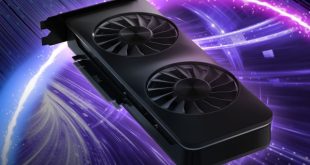Overview:
This chapter focuses on various cadences which can occur in video content from a plethora of sources. Severe moire is used as an indication that cadence lock has not been achieved. It is the amount of time it takes to achieve a cadence lock, indicated by a reduction in the moire distortion, which is the scoring mechanism for this specific test.
Scoring:
We have to pay attention to moire pattern throughout and document the time it appears (if any). No moire is a perfect result, slight moire appearance in specific sections means the result is intermediate, and if moire is noted throughout, the graphics solution is awarded no points.
Multi Cadence: 8:7 8 FPS Animation (Score either 5, 3 or 0)
No moire pattern observed in stands within less than 1/2 second – Scores 5
No moire pattern observed in stands within less than 1 second– Scores 3
Moire pattern observed in stands intermittently or constantly through the clip– Scores 0
|
Intel GMA X4500 (G41)
|
Intel HD Graphics
|
ATI HD4200 (IGP)
|
ATI HD5450 (Discrete)
|
ATI HD5550 (Discrete)
|
ATI HD5770 (Discrete)
|
ATI HD5850 (Discrete)
|
ATI HD5870 (Discrete)
|
NV G210 (Discrete)
|
NV G220 (Discrete)
|
NV GTX 465 (Discrete)
|
NV GTX 480 (Discrete)
|
|
|
8:7 8 FPS Animation
|
0
|
0 |
5
|
5
|
5
|
5
|
5
|
5
|
0
|
0
|
5
|
5
|
Identical results to the last two pages. A perfect showing for ATI with the nVidia GTX models equaling the results.
 KitGuru KitGuru.net – Tech News | Hardware News | Hardware Reviews | IOS | Mobile | Gaming | Graphics Cards
KitGuru KitGuru.net – Tech News | Hardware News | Hardware Reviews | IOS | Mobile | Gaming | Graphics Cards


